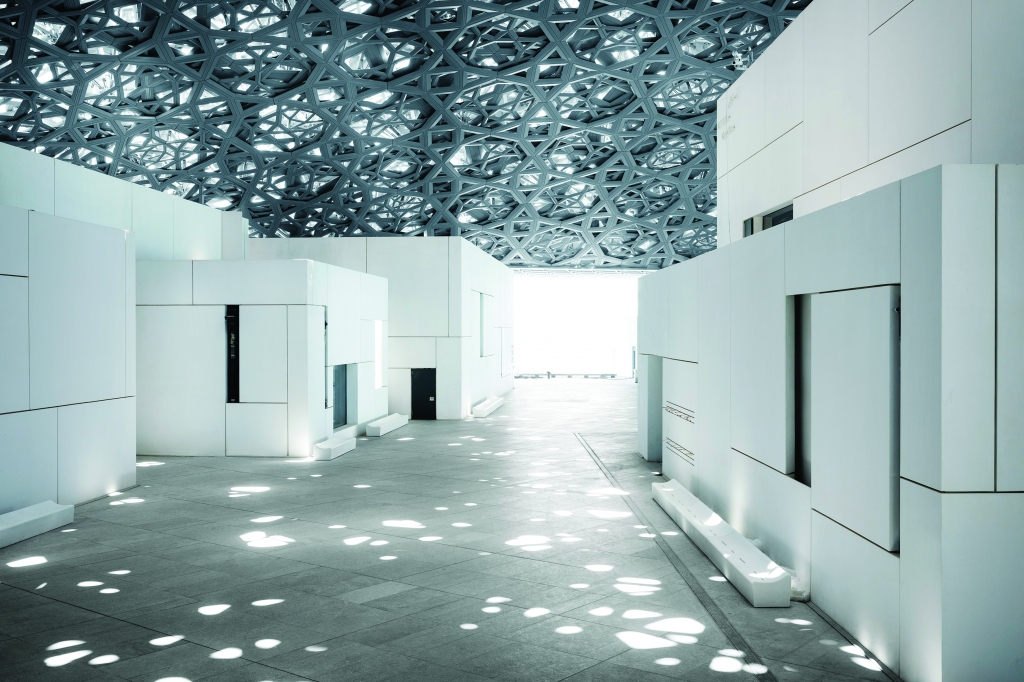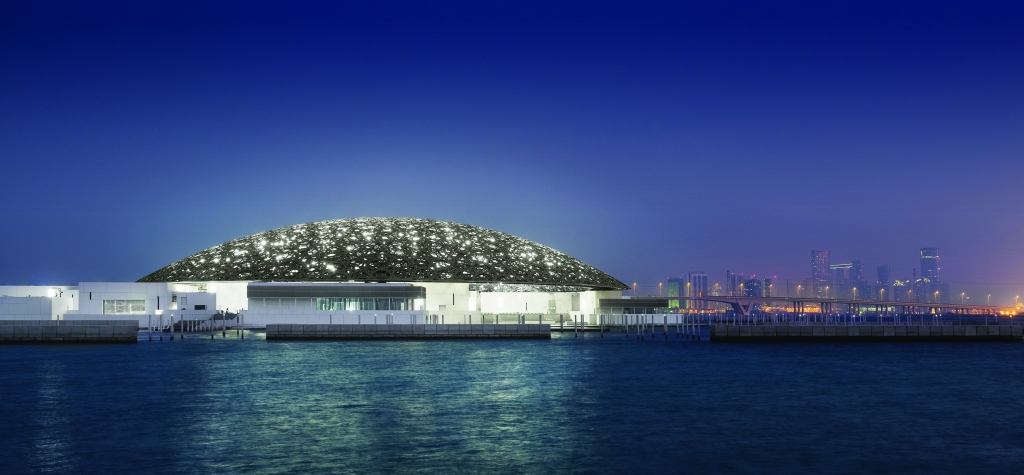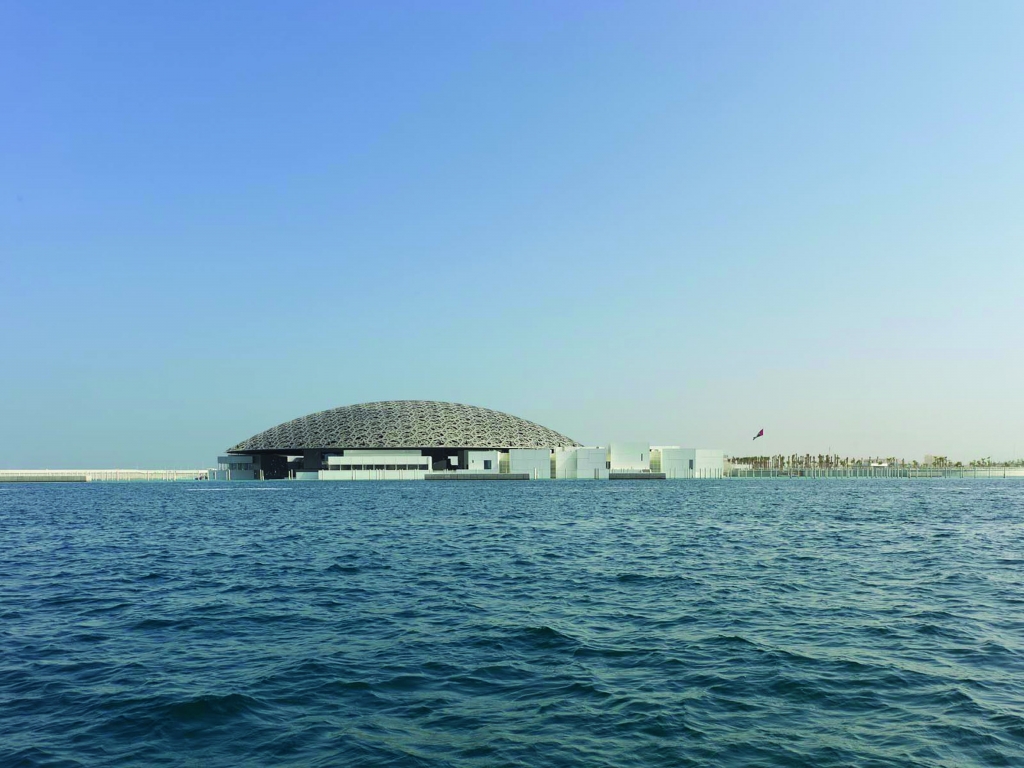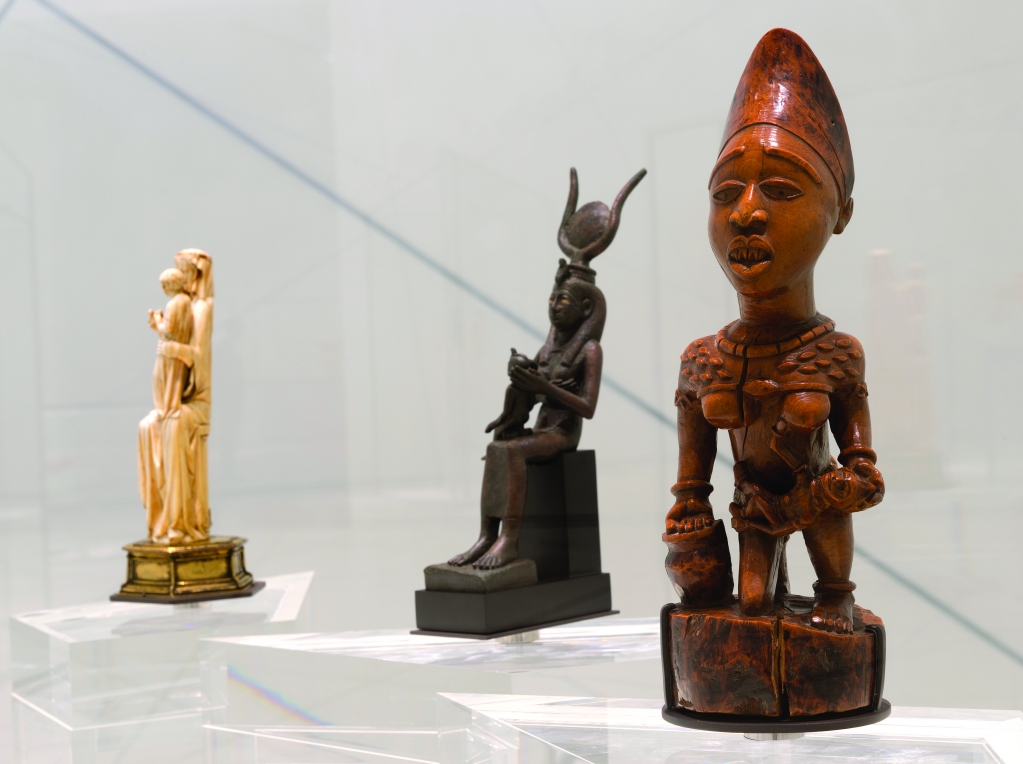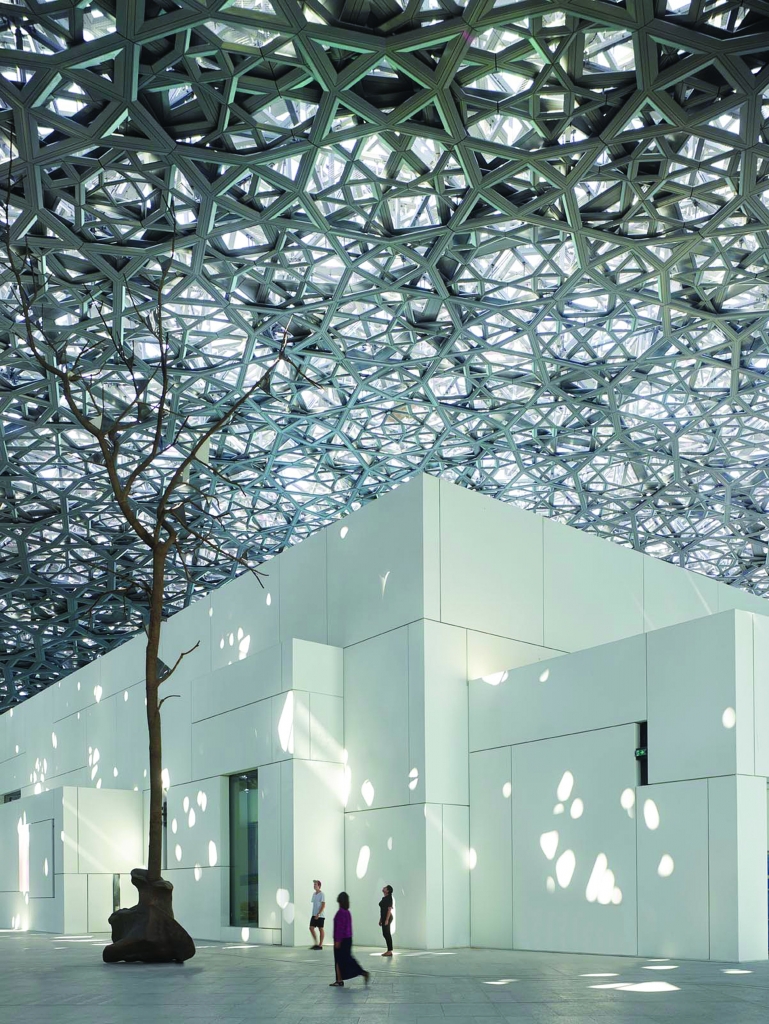The Louvre Abu Dhabi
The Louvre Abu Dhabi is the result of an unprecedented initiative that laid the groundwork for a new type of cultural collaboration of unparalleled scope between two countries, centered on the creation of a national institution.The Louvre Abu Dhabi: a masterful architectural design Jean Nouvel, a Pritzker Architecture Prize winner selected to design the museum, was inspired by the special features of the Saadiyat site: a virgin lagoon island, between sand and sea, shade and light. His design will offer future visitors a high-impact architectural and museum experience that fosters dialogue between cultures. Jean Nouvel wanted his building to have “a form that matches its function as a sanctuary for the most valuable works of art.”
Born out of an intergovernmental agreement signed on March 6, 2007, between the United Arab Emirates and France, the Louvre Abu Dhabi is the first universal museum in the Arab world. The museum brings the Louvre name to Abu Dhabi and presents both ancient and contemporary works of historic, cultural, and sociological interest from around the world.
Overview of the collection: a unique museum
The future museum is not, in any way, a copy of the French Louvre; it is an individual institution offering its own interpretation of a universal museum, reflecting its era and the local traditions of the country it lies in. Its collection, which will include loans from French institutions (rotated on a ten-year basis), as well as works from its own currently-developing compilation, will be presented in an original manner.
Its uniqueness is based on an overarching vision of artistic creation. Museums traditionally organize their collections by school, technique, and materials, and while this approach does highlight the unique characteristics of a series, it does nothing to show the influences, exchanges, and circulation of ideas and know-how. The Louvre Abu Dhabi’s unique exhibition design explores the connections between civilizations and cultures that may, at first, appear to be far separated by time and geography. Visitors will be guided through a chronological and theme-based display, traversing different periods and civilizations. The display picks out universal themes and common influences to illustrate the similarities that grow out of a shared human experience, beyond any geographical, historical, or cultural boundaries. The result is a truly universal museum.
Saadiyat Island and the Cultural District
Built on Saadiyat Island (the island of happiness), a natural 27-km² island the size of a third of Paris, the cultural district will house a number of renowned cultural establishments: the Louvre Abu Dhabi, designed by architect Jean Nouvel; the Zayed National Museum by Norman Foster; and the Guggenheim Abu Dhabi by Frank Gehry. The Cultural District will be integrated into a new urban complex just outside the historic Abu Dhabi city center, with housing for 150,000 residents. All of these projects are intended to feed the new artistic expressions, inherent to a rapidly growing region. The Louvre Abu Dhabi aims to complement the other Emirati museums and help transform the art and cultural scene in the Middle East.
The Louvre Abu Dhabi “museum city” covers nearly 64,000 m², with 6,000 m² devoted to the permanent collection and 2,000 m² for temporary exhibitions.
A dome of 180 meters in diameter (the same size as the Louvre’s Cour Carrée) covers two thirds of the museum, providing shade and reducing energy consumption.
Echoing the mosque, mausoleum, caravanserai, and madrasa, its shape is not bound by any literal inspiration: resting on four points of contact and slightly low-slung, it is the embodiment of a completely contemporary style. Pierced with openings to look like interwoven palm leaves, a traditional roofing material in the Emirates, the dome resembles silver lace. A geometric template of stars repeated in different sizes and at different angles in a complex arrangement forms eight distinct layers, four external and four internal. Sun filters through the dome like a delicate, protective rain of light, similar to a claustra lattice of mashrabiyas, reflecting the constant interplay of light and shadow in the country.
Below, Jean Nouvel has designed a complex of buildings with harmonious proportions, embraced by the sea. Freely inspired by buried cities and the prototypical Oriental city, a large part of the museum complex is sheltered under the comfort of this shadow. This urban and geometric “medina” of rooms appears like a city neighborhood, with some thirty buildings visible along a promenade. Rising up to heights of 4-12 m, they each feature a different façade decorated with a variety of piercings, combining unique transitions and passages. The museum city creates a space that plays with the multiple connections between indoor and outdoor, ever-changing and poetic, to kindle curiosity and invite visitors to explore new routes and pathways, guided by the light.
Inspired by the ancient falaj system of Arab engineering, a water channel runs through the museum, making the space into a refreshing oasis that encourages strolling along the waterside.
- The Musée du Louvre,
- The Centre Pompidou,
- The Public Establishment of the Musée d’Orsay and the Musée de l’Orangerie,
- The Bibliothèque Nationale de France (BnF),
- The Musée du Quai Branly,
- The Réunion des Musées Nationaux — Grand Palais,
- The Musée et Domaine National de Versailles,
- The Musée National des Arts Asiatiques Guimet,
- The École du Louvre,
- The Musée Rodin,
- The Domaine National de Chambord,
- The French Operator for Heritage and Cultural Building Projects (Oppic)
Foto: © Louvre Abu Dhabi
 The international Art Magazine
The international Art Magazine